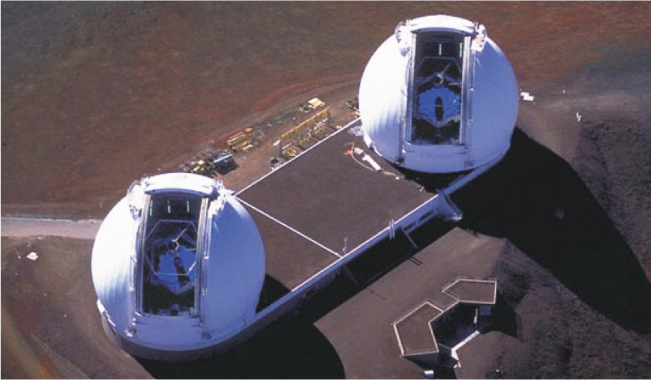First Light for Keck Interferometer
DOI: 10.1063/1.1381097
A faint star in the constellation Lynx was the first object observed by astronomers using the two newly linked, 10-meter Keck telescopes on Mauna Kea in Hawaii. The world’s largest optical interferometer has the resolving power of an 85-meter telescope. Interferometers have existed for years in radio astronomy, but the technology required to link large-scale optical telescopes has only recently been developed (see Physics Today May 1995, page 42
The light from the two telescopes is collected in an underground tunnel for analysis. In that tunnel, a series of mirrors is adjusted so that the optical paths at the midpoint are equal to within a nanometer. Tests on the Lynx star reveal that the linked telescopes can accurately track the star for as long as 10 seconds.
Many of the techniques used with the Keck interferometer were adapted from the Palomar Testbed Interferometer in California, says Mark Colavita of NASA’s Jet Propulsion Laboratory. “We’re all pretty excited to have met this milestone.”
Testing will continue for the next several months. Limited scientific research, including the search for extrasolar planets, is expected to begin this fall.

Observing in Tandem: The Keck telescopes now see in stereo.
KECK OBSERVATORY

More about the Authors
Paul Guinnessy. American Center for Physics, One Physics Ellipse, College Park, Maryland 20740-3842, US . pguinnes@aip.org

